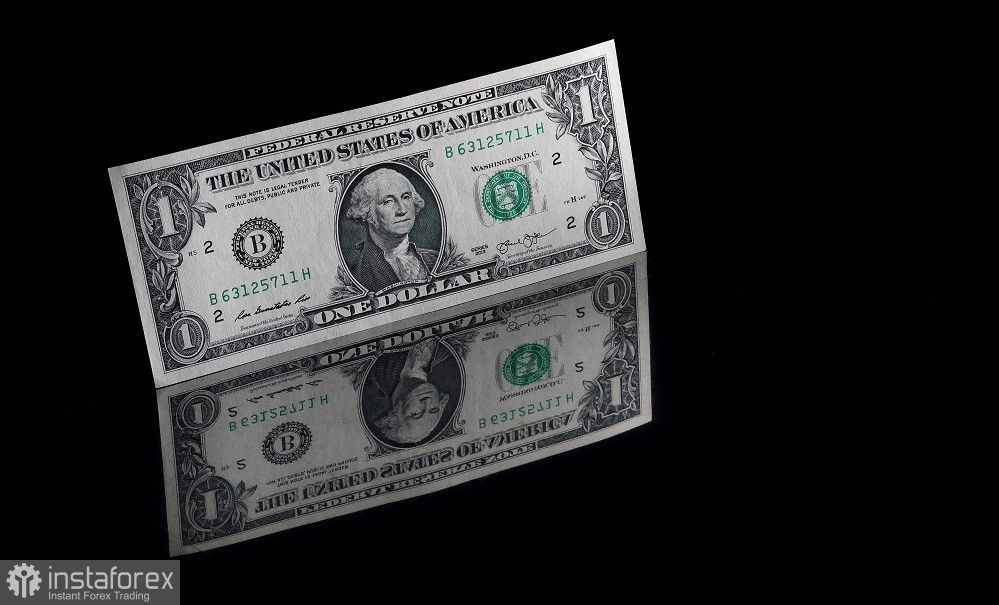The upcoming week is filled with fundamental events, primarily due to the "central bank parade": the Federal Reserve of the United States, the Bank of England, the Swiss National Bank, and the Bank of Japan will conduct their meetings. Influential economic reports will be published in the US, Canada, the UK, and Japan.
Speaking specifically about the EUR/USD pair, the main focus will be on the Fed. On September 20, Fed officials will announce their decision. However, the formal results of the September meeting are already factored into the prices. To be more precise, the most likely outcomes of the upcoming meeting have been priced in. According to the CME FedWatch Tool, the probability of maintaining the status quo is 98%, while the probability of a rate hike is only 2%. Therefore, the implementation of the base scenario will not have any impact on EUR/USD; the fate of the pair will depend on the tone of the accompanying statement and the rhetoric of Fed Chairman Jerome Powell.
At stake is another round of interest rate hikes at one of the subsequent meetings, which could be in November or December. As of today, the probability of a rate increase at the November meeting is 27%, and at the December meeting (assuming status quo in November) is 34%.

Interestingly, prior to the US inflation report, the probability of another rate hike was slightly higher—for example, the prospects for November were assessed as 50/50. However, market participants interpreted the inflation reports in a specific way, focusing on the decline in core indicators while ignoring the continued rise in overall inflation.
So, the Consumer Price Index in August accelerated to 3.7% year-on-year. This component of the release has been in the green zone for the second consecutive month, showing an uptrend after months of decline. Meanwhile, the core CPI has decreased again, this time to 4.3%. This is the lowest value of this indicator since 2021. The core index has consistently decreased for the fifth consecutive month, indicating a clear trend.
A similar story unfolded with the Producer Price Index. The index had been consistently declining for 12 months, but unexpectedly rose during the summer, breaking the downtrend. In July, it rose to 0.8% year-on-year, and in August, according to data published last week, it rose to 1.6% year-on-year. However, the core PPI decreased again to 2.2%, the lowest value since February 2021.
Considering the fact that the probability of a rate hike at the September and November meetings has decreased following the above-mentioned data, we can conclude that traders have focused on the decline in core inflation indicators. But whether the Fed officials will take a similar stance remains an open question.
The inflation reports were released during the "quiet period," so we do not know how the members of the US central bank reacted to them. It is quite possible that the central bank will be more concerned about the rise in overall inflation, especially amid the recent events in the oil market. The price of Brent crude oil exceeded $94 per barrel last week, reaching this level for the first time since November 16 , 2022. It appears that the uptrend will persist in the future. According to experts from Bloomberg Economics, Saudi Arabia is aiming for a price of $100 per barrel with its actions to cover its state expenses. Analysts estimate that oil will continue to appreciate because in the next quarter, global markets will face a supply deficit of more than 3 million barrels per day (the largest deficit in 16 years). The reduction in supply amid record demand will exacerbate the crisis in the oil market and likely trigger another surge in overall inflation in the United States.
Therefore, in my opinion, the market has made a premature assumption that the Fed will be pleased with the decline in core inflation and will not notice the rise in CPI and PPI. Considering Powell's previous stance (he expressed concern about inflation at the Jackson Hole Symposium) and that of some of his hawkish colleagues, it can be assumed that the central bank will tighten its rhetoric and possibly announce a rate hike at the November meeting following the September meeting.
Overall, the dynamics of the EUR/USD pair in the upcoming week will largely depend on the dollar's movement. The European Central Bank exerted downward pressure on the euro last week, indicating that the peak in interest rates has already been reached. Essentially, the central bank has shifted into "defense mode." The rhetoric of ECB President Christine Lagarde softened as well—instead of announcing further actions, she stated that the ECB would keep rates "at high levels for a longer period." Such rhetoric disappointed EUR/USD buyers, reducing hawkish expectations, and causing the euro to lose a significant fundamental advantage.
Therefore, the market will focus on the Fed. All other reports during the week will play a secondary role. We will, for instance, receive data on the volume of building permits issued in the United States, the Philadelphia Fed Manufacturing Index, European PMIs, and the US Manufacturing PMI.
However, all these reports will have background significance. The fate of EUR/USD lies in the Fed's hands. Following the September meeting, traders will either push the pair into the five-figure range or return it to the 1.0700-1.0850 range.
 English
English 
 Русский
Русский Bahasa Indonesia
Bahasa Indonesia Bahasa Malay
Bahasa Malay ไทย
ไทย Español
Español Deutsch
Deutsch Български
Български Français
Français Tiếng Việt
Tiếng Việt 中文
中文 বাংলা
বাংলা हिन्दी
हिन्दी Čeština
Čeština Українська
Українська Română
Română

